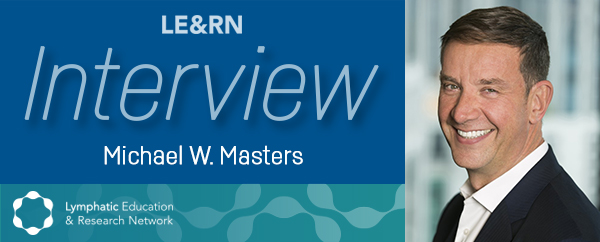Michael W. Masters is Founder/Portfolio Manager/Chief Investment Officer of Masters Capital Management and the primary investor and CEO of Celltaxis LLC. He graduated from the University of Tennessee, where he was an All-American swimmer. Masters feels the discipline of swimming helped him develop the persistence necessary for success in the financial world. In 1994 he founded Masters Capital, the success of which is proof to him that a conscience-first approach to investing can be both financially and ethically rewarding. Over the years he has been invited to share his industry expertise, knowledge, and perspective with numerous organizations, universities, and news outlets. In 2020 he founded Celltaxis LLC in Atlanta, Georgia.
Tell us a little bit about Celltaxis and its investigational drug, Acebilustat.
Celltaxis LLC is a clinical stage company developing Acebilustat, a potent immune system modulating drug. We believe that when taken orally once a day, Acebilustat may help reduce the inflammatory pathology and abnormal skin thickening of Lymphedema (LE). Acebilustat for arm LE will be investigated in a clinical trial at Stanford University, a LE&RN-designated Center of Excellence, led by Dr. Stanley G. Rockson. Acebilustat has been evaluated in several Phase I and II studies for other indications, and has demonstrated a favorable safety, tolerability, and PK profile.
What inspired you to dedicate your resources to creating a drug for LE?
I thought the market was missing an opportunity that Celltaxis and Acebilustat represent. My investment in both reflects the ethical principle of advancing a promising novel therapeutic for the benefit of patients. Many women's health indications do not receive the funding they deserve. Breast cancer survivors tell us they have been “Met with shrugs when complaining about their lymphedema, as though they should just be grateful their cancer is gone.” It is our objective that all LE patients have a high quality of life. Acebilustat is a targeted modulator of the biochemical pathway that has been shown by Dr. Rockson and his Stanford colleagues to be important in the disease pathology. We think our drug is in a unique position to be an effective modulator of inflammation in this chronic condition. Additionally, we like the idea of helping individuals in an ignored indication.
What are your clinical plans and timelines for Acebilustat?
Celltaxis will conduct a Phase II Pilot Study with Dr. Stanley Rockson’s world-class LE study team at Stanford University. This placebo controlled, blinded study will take about two years to complete. We are starting with LE of the arm and will then expand to LE of all causes. A therapeutic could be on the market in as soon as six to eight years.
Tell us about the study itself.
Our study is enrolling 70 patients with LE in one arm. Enrollment began in August 2022. We expect the study to run for about two years. Some enrollment criteria are rather detailed, but generally, patients between the ages of 18–75 with Stage II chronic LE of one arm are eligible. We will primarily look for changes in skin thickness by ultrasound and collect patient reported quality of life assessments. The treatment is nine months long with approximately five doctor visits. Please visit our LE&RN Expo pages for up-to-date study information.
How would your study's success hope to impact those living with LE?
Our study is the next step in the development of a once-daily, oral medication to treat all forms of LE. Our goal is to improve patient symptoms, including decreasing fluid accumulation, limiting fat deposition, reducing inflammation and skin thickening, and minimizing the need to spend time in compression garments. Most importantly, we hope to improve the quality of life for LE patients. We intend to explore the potential for our medication to be used prophylactically after invasive surgery or other traumatic injuries to the lymphatic system to prevent the development of LE.
How did Celltaxis become aware of LE&RN and why did you decide to become a supporter?
The science behind our investigational drug Acebilustat led us to Dr. Stanley Rockson, who then introduced us to LE&RN and the important work they’re doing to raise awareness and promote funding, particularly at the federal level. Like many, we were unaware of the high incidence and prevalence of LE, and that it was without a pharmaceutical therapy. It’s clear that there needs to be more basic research and clinical science focused on better treatments. This is what drives us forward, and we hope that our study in some way serves as a spark that helps ignite further awareness of the unmet need that so many LE patients experience every day.
